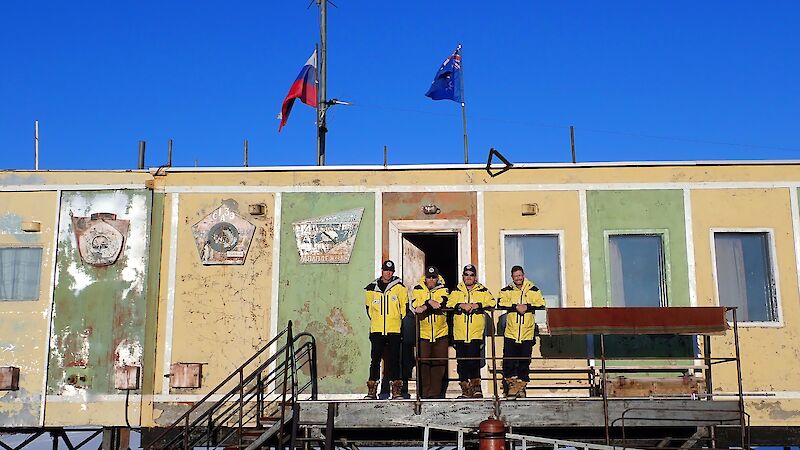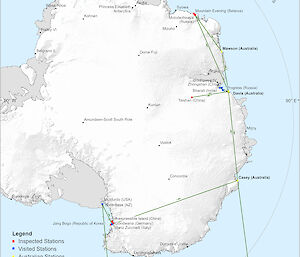In January 2020, Australian officials led by Australian Antarctic Division Director, Kim Ellis, completed Australia’s most extensive program of Antarctic Treaty inspections to date, spanning much of East Antarctica. Australia regularly conducts inspections in Antarctica, in support of the Antarctic Treaty and its Environmental Protocol, and to confirm compliance with key requirements including non-militarisation and environmental protection.
The team from the Australian Antarctic Division and the Department of Foreign Affairs and Trade flew via Christchurch to McMurdo Station (USA), and made an official visit to New Zealand’s Scott Base to compare experiences on station modernisation plans, Antarctic science, and operational support. The team moved on to Terra Nova Bay, where Italy kindly provided support at Mario Zuchelli Station. The team conducted the first inspection of Korea’s year-round Jang Bogo Station, established in 2014, and the first inspection of China’s temporary station on Inexpressible Island, where China plans to build a year-round facility. Germany’s Gondwana Station was inspected as a follow-up to an Australian inspection in 2011, and the team also reviewed Italy’s gravel runway construction project.
The team then flew some 2000 kilometres from Browning Pass skiway in spectacular mountain scenery, to Casey research station, before continuing to Davis research station. This served as the base for the team’s next inspection, of China’s Taishan Station, high on the inland plateau. Taishan Station had not previously been inspected.
While at Davis Mr Ellis led official visits to stations in the Larsemann Hills, where Australia, Russia, China and India cooperate in a management coordination arrangement under the Environmental Protocol (Larsemann Hills Antarctic Specially Managed Area No.6). Valuable discussions on cooperation in the area were held with personnel at India’s Bharati Station, China’s Zhongshan Station, and Russia’s Progress Station.
The team then visited Mawson research station, before flying to Russia’s Molodezhnaya Station, around 700 kilometres further west, where they were hosted by the Russian Antarctic program. Molodezhnaya is currently operated as a seasonal facility, but was formerly the USSR’s largest Antarctic station, and much of it is now unused. This was the first on-ground inspection of Molodezhnaya since 1983, and followed an Australian aerial inspection in 2010. The final inspection was Mountain Evening Station, a new facility under development by Belarus, located about 20 kilometres to the east of Molodezhnaya. Currently a seasonal station, Belarus plans to operate Mountain Evening year-round in the near future.
The Australian team was warmly welcomed at all of the facilities visited, and found a high level of compliance with the provisions of the Treaty and Protocol. These inspections provided important oversight of these stations, and an opportunity to observe scientific research being undertaken, and the operational practices of other Antarctic nations.
The reports of the inspections will be considered by the Antarctic Treaty Parties and then made publically available.


